John Edward Larkin, age 43, from Boston, Massachusetts, Suffolk county.
Spouse: Ruth Helen Larkin
Service era: World War II
Date of death: January 24, 1944
Source: National Archives

Promote & Preserve stories of U.S. fallen soldiers/sailors
John Edward Larkin, age 43, from Boston, Massachusetts, Suffolk county.
Spouse: Ruth Helen Larkin
Service era: World War II
Date of death: January 24, 1944
Source: National Archives

Marek G. Pzegeo from Massachusetts, Essex county.
Service era: World War II
Date of death: Monday, November 22, 1943
Death details: Finding of death
Cemetery: Zachary Taylor National
Source: National Archives, grave marker
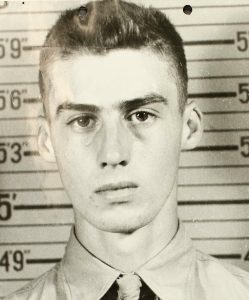
Darwin H. Brown, age 19, from Bernardston, Massachusetts, Franklin county.
Parents: Beatrice B. Nelson
Service era: World War II
Date of death: Sunday, November 21, 1943
Death details: On November 6, 2001, the Central Identification Laboratory-Hawaii (CILHI, now DPAA) identified the remains of Private 1st Class Darwin H. Brown, missing from World War II. Brown entered the U.S. Marine Corps from Massachusetts and served with Company F, 2nd Battalion, 2nd Marine Regiment, 2nd Marine Division. On November 20, 1943, he was killed during the amphibious assault on Betio Island, as part of the Battle of Tarawa. He was buried on Betio, but his remains were not recovered in the immediate aftermath of the war. In 1999, a construction crew operating on Betio located human remains and military equipment. These remains were taken to CILHI, and Brown was later identified from among them.
Cemetery: Honolulu Memorial
Source: National Archives, American Battle Monuments Commission, Defense POW/MIA Accounting Agency

Osea Alexander Audette, age 27, from Spencer, Massachusetts, Worcester county.
Parents: Bella M. Audette
Service era: World War II
Date of death: Saturday, November 20, 1943
Death details: From November 20 through 23, 1943, the U.S. Marine Corps and U.S. Navy conducted a large-scale amphibious assault on the Japanese-held atoll of Tarawa as part of Operation Galvanic, the Allied capture of the Gilbert Islands. Located 2,500 miles southwest of Hawaii, Tarawa was a crucial stepping stone in the planned U.S. offensive across the central Pacific toward Japan. The Japanese garrison on Tarawa’s main island of Betio was well-entrenched with hundreds of bunkers and gun positions behind formidable beach obstacles. The first wave of Marines approaching the shore encountered lower-than-expected tides, forcing them to leave their landing craft on the reef and wade the hundreds of yards to the beach under intense enemy fire. The heaviest number of U.S. casualties were suffered during this phase of the landing. Eventually, rising tides allowed U.S. warships to maneuver closer to shore and support the troops with effective naval gunfire. More Marines landed on the second day, launching attacks inland from the beaches and seizing the Japanese airfield on the island. However, the enemy launched vicious counterattacks and two more days of intense fighting were needed to secure Betio. The last enemy strongpoints were taken on the morning of November 23. The fighting on Betio cost the Marines nearly 3,000 casualties but enabled U.S. forces to press further across the Pacific and yielded valuable tactical lessons that reduced U.S. losses in future amphibious landings. Sergeant Osea Alexander Audette, who entered the U.S. Marine Corps from Massachusetts, served with Company F, 2nd Battalion, 2nd Marine Regiment, 2nd Marine Division. He was killed in action on Tarawa on November 20, and was buried in Beach Red Cemetery. His remains could not be located or identified following the war. Today, Sergeant Audette is memorialized on the Courts of the Missing at the National Memorial Cemetery of the Pacific.
Cemetery: Tablets of the Missing at Honolulu Memorial
Source: National Archives, American Battle Monuments Commission, Defense POW/MIA Accounting Agency

Edwin Francis Benson, age 22, from Boston, Massachusetts, Suffolk county.
Parents: Mary M. Benson
Service era: World War II
Date of death: Saturday, November 20, 1943
Death details: On June 24, 2019, the Defense POW/MIA Accounting Agency (DPAA) announced it has accounted for Private Edwin Francis Benson, missing from World War II. Private Benson, who joined the U.S. Marine Corps from Massachusetts, served with Company L, 3rd Battalion, 2nd Marine Division. Private Benson was killed in action by an enemy gunshot wound to the head during his unit’s landing on Betio Island on November 20, 1943, during the Battle of Tarawa. He was buried on Betio Island at the time, but could not be identified from among the remains disinterred from the island after the war. In 2009, the non-profit organization History Flight located a communal burial site on Betio Island that was later identified as Cemetery 33, which prompted an investigation of all unidentified losses associated with the Tarawa Atoll, including Private Benson. In 2016, DPAA proposed the disinterment of Tarawa unknowns buried in the National Memorial Cemetery of the Pacific, Hawaii. In 2017, DPAA analysts were able to use modern forensic techniques to identify Private Benson from among these remains.
Cemetery: Tablets of the Missing at Honolulu Memorial
Source: National Archives, American Battle Monuments Commission, Defense POW MIA Accounting Agency, Defense POW/MIA Accounting Agency
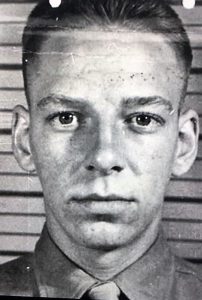
Robert E. Coloske, age 18, from Massachusetts.
Service era: World War II
Date of death: Saturday, November 20, 1943
Death details: From November 20 through 23, 1943, the U.S. Marine Corps and U.S. Navy conducted a large-scale amphibious assault on the Japanese-held atoll of Tarawa as part of Operation Galvanic, the Allied capture of the Gilbert Islands. Located 2,500 miles southwest of Hawaii, Tarawa was a crucial stepping stone in the planned U.S. offensive across the central Pacific toward Japan. The Japanese garrison on Tarawa’s main island of Betio was well-entrenched with hundreds of bunkers and gun positions behind formidable beach obstacles. The first wave of Marines approaching the shore encountered lower-than-expected tides, forcing them to leave their landing craft on the reef and wade the hundreds of yards to the beach under intense enemy fire. The heaviest number of U.S. casualties were suffered during this phase of the landing. Eventually, rising tides allowed U.S. warships to maneuver closer to shore and support the troops with effective naval gunfire. More Marines landed on the second day, launching attacks inland from the beaches and seizing the Japanese airfield on the island. However, the enemy launched vicious counterattacks and two more days of intense fighting were needed to secure Betio. The last enemy strongpoints were taken on the morning of November 23. The fighting on Betio cost the Marines nearly 3,000 casualties but enabled U.S. forces to press further across the Pacific and yielded valuable tactical lessons that reduced U.S. losses in future amphibious landings. Private Robert E. Coloske entered the U.S. Marine Corps from Massachusetts and served in Company D, 2nd Battalion, 18th Marine Regiment, 2nd Marine Division. He was killed in action during the Battle of Tarawa on November 20. Private Coloske was buried on Betio Island, but his remains could not be identified among those disinterred from the island after the war. Today, Private Coloske is memorialized on the Courts of the Missing at the National Memorial Cemetery of the Pacific.
Source: National Archives, Defense POW/MIA Accounting Agency
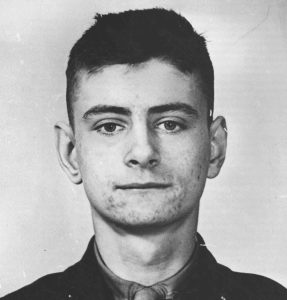
John William MacDonald, age 19, from Boston, Massachusetts, Suffolk county.
Parents: Dorothy H. MacDonald
Service era: World War II
Date of death: Saturday, November 20, 1943
Death details: On June 13, 2016, the Defense POW/MIA Accounting Agency (DPAA) accounted for Private First Class John William MacDonald, missing from World War II. Private First Class MacDonald entered the U.S. Marine Corps from Massachusetts and served with Company F, 2nd Battalion, 8th Marine Regiment, 2nd Marine Division. On November 20, 1943, he was killed during the amphibious assault on Betio Island, as part of the Battle of Tarawa. He was buried in a Marine cemetery on Betio, but his remains were not recovered in the immediate aftermath of the war. In 2015, the nonprofit organization History Flight located a burial trench on Betio and recovered several sets of human remains, and DPAA forensic analysts identified PFC MacDonald from among these remains.
Source: National Archives, Defense POW/MIA Accounting Agency
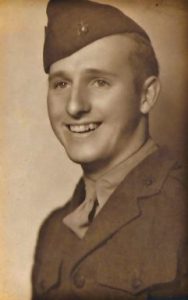
James F. Mansfield, age 19, from Plymouth, Massachusetts, Plymouth county.
Parents: Hilda Mansfield
Service era: World War II
Date of death: Saturday, November 20, 1943
Death details: On May 6, 2016, the Defense POW/MIA Accounting Agency (DPAA) identified the remains of Private First Class James F. Mansfield, missing from World War II. Private First Class Mansfield, who entered the U.S. Marine Corps from Massachusetts, was a member of Company K, 3rd Battalion, 8th Marine Regiment, 2nd Marine Division. On November 20, 1943, was killed in action on during the U.S. assault on the Japanese-controlled Tarawa Atoll in the Gilbert Islands. PFC Mansfield was buried in a cemetery on Betio Island, Tarawa Atoll, but investigations of the area immediately after the war failed to locate or identify his remains. In 2015, the organization History Flight, Inc. uncovered a burial trench on Betio and recovered the remains of several U.S. Marines who fought in the battle correlating to PFC Mansfield’s loss. These remains were turned over to DPAA analysts who used modern forensic techniques to identify PFC Mansfield from among them.
Source: National Archives, Defense POW/MIA Accounting Agency
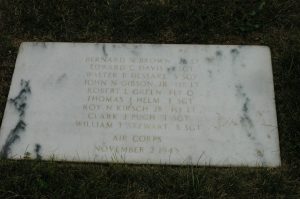
Edward C. Davis from Massachusetts, Middlesex county.
Service era: World War II
Date of death: Tuesday, November 2, 1943
Death details: Killed in action when his aircraft was shot down while trying to bomb an aircraft factory at Weiner Neustadt, Austria
Cemetery: Zachary Taylor National
Source: National Archives, grave marker, Metro West Daily News
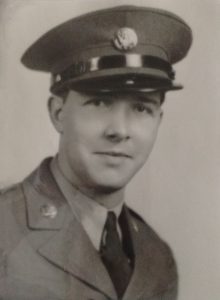
Ray D. Wright, age 26, from Massachusetts, Middlesex county.
Service era: World War II
Military history: 28 Materials Squadron 20 Air Base Group
Date of death: Saturday, December 12, 1942
Death details: Following the Allied surrender on the Bataan Peninsula on April 9, 1942, the Japanese began the forcible transfer of American and Filipino prisoners of war to various prison camps in central Luzon, at the northern end of the Philippines. The largest of these camps was the notorious Cabanatuan Prison Camp. At its peak, Cabanatuan held approximately 8,000 American and Filipino prisoners of war that were captured during and after the Fall of Bataan. Camp overcrowding worsened with the arrival of Allied prisoners who had surrendered from Corregidor on May 6, 1942. Conditions at the camp were poor, with food and water extremely limited, leading to widespread malnutrition and outbreaks of malaria and dysentery. By the time the camp was liberated in early 1945, approximately 2,800 Americans had died at Cabanatuan. Prisoners were forced to bury the dead in makeshift communal graves, often completed without records or markers. As a result, identifying and recovering remains interred at Cabanatuan was difficult in the years after the war. Private Ray D. Wright entered the U.S. Army Air Forces from Massachusetts and served in the 28th Materials Squadron, 20th Air Base Group in the Philippines during World War II. He was captured in Bataan following the American surrender on April 9, 1942, and died of dysentery and beriberi on December 12, 1942, at the Cabanatuan Prison Camp in Nueva Ecija Province. He was buried in a communal grave in the camp cemetery along with other deceased American POWs; however, his remains could not be associated with any remains recovered from Cabanatuan after the war. Today, Private Wright is memorialized on the Walls of the Missing at the Manila American Cemetery in the Philippines.
Source: National Archives, Defense POW/MIA Accounting Agency